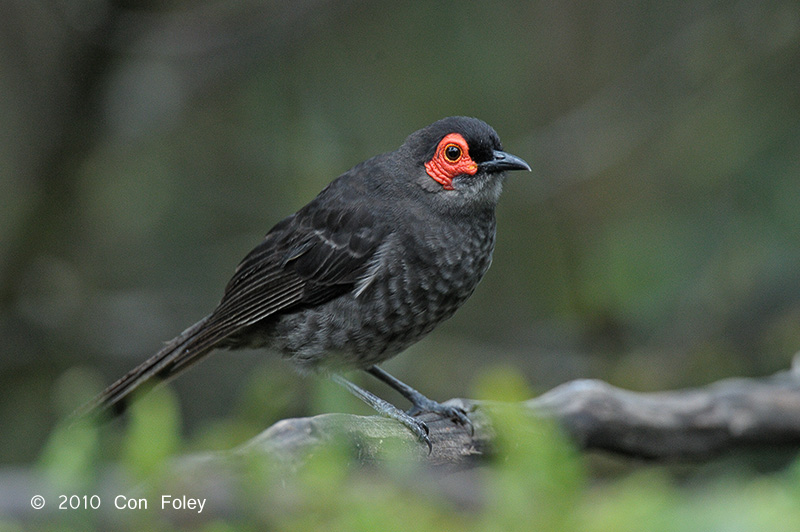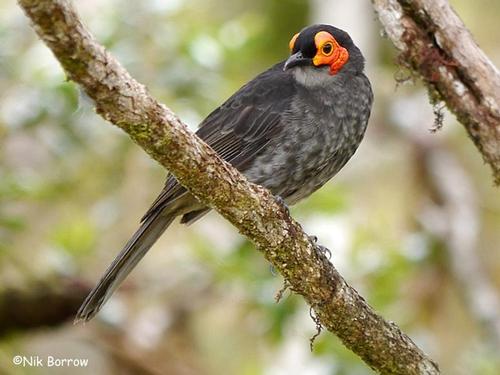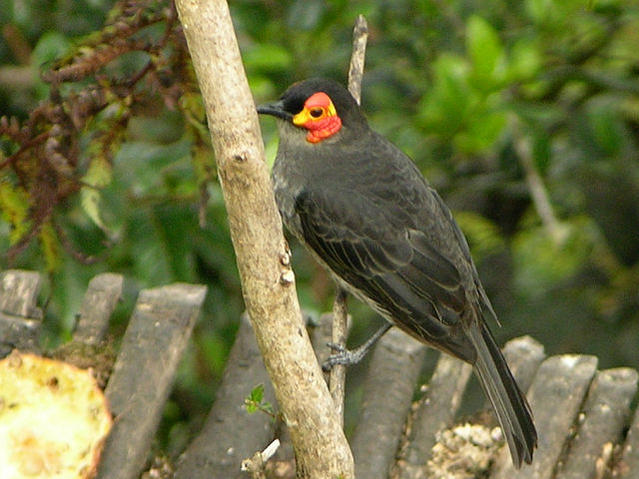
Melipotes fumigatus
TAXONOMY
Melipotes fumigatus Meyer, 1886, southeast New Guinea.
OTHER COMMON NAMES
English: Common melipotes, smoky honeyeater; French:
Mйliphage enfumй; German: Aschbrust-Honigfresser; Spanish:
Pбjaro Azъcar Comъn.
PHYSICAL CHARACTERISTICS
8.6 in (22 cm); female 1.9 oz (52 g), male 2.1 oz (58 g). Orangeyellow
face skin and ear wattle; blackish brown upperparts. Underparts
are dark gray-brown, paler on throat and abdomen. Bill
blackish; legs sooty gray.
DISTRIBUTION
Central ranges of New Guinea, and Kumawa, Fakfak, Foya,
and Cyclops ranges, at 3,000–13,000 ft (1,000–4,200 m).
HABITAT
Montane rainforest, forest edge, secondary growth, and gardens.
BEHAVIOR
Quiet and sluggish for a honeyeater, although sometimes aggressive.
Call is a weak, monotonous swit...swit...swit....
FEEDING ECOLOGY AND DIET
Feed mostly on small fruits in mid-story and canopy. Also eat
small insects by gleaning and sallying.
REPRODUCTIVE BIOLOGY
Nest August to October. The nest is loose and cup-shaped and
made of leaves and moss and is held together with black fibers
from a fungus. Females lay one egg. Young are fed on fruit.
CONSERVATION STATUS
Not threatened.
SIGNIFICANCE TO HUMANS
None known.
Photo Gallery of - Common smoky honeyeater




 Animalia Life
Animalia Life